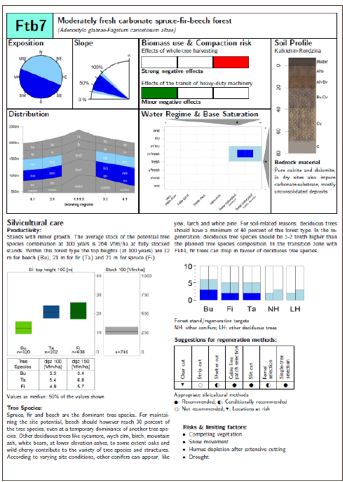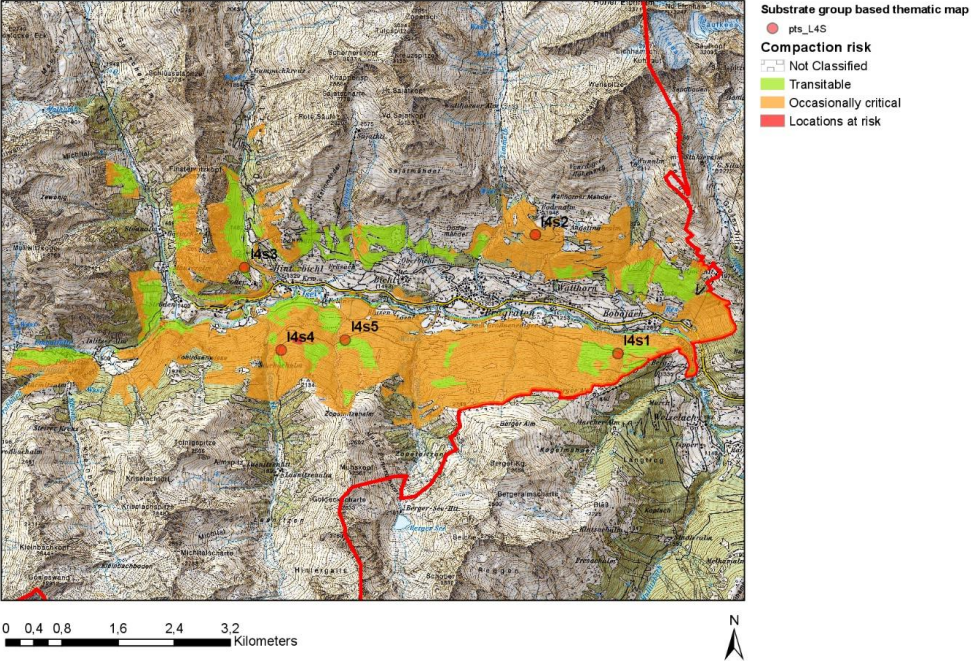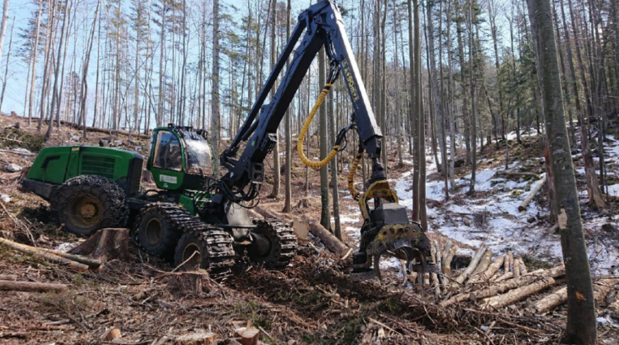Towards Best Soil Management Practices in the Alps
Soil management is an inherent part of various sectors, such as forestry, agriculture, spatial planning, construction, etc. To prevent soil degradation while performing sector activities, we need diverse information.
Use of specific maps helps improve management to minimize soil threats (e.g., erosion, contamination, biodiversity loss). Hereafter are presented maps of different information, used in different sectors:



1. Integration of soil protection best practices into forest management plans
An important improvement was made within the project with the recent addition of a Forest Type-based thematic map, showing the effects of “whole-tree” harvesting measures on forest soil nutrient availability. The traffic light system, refined and also applied in the project Case Study area of Prägraten, defines guidelines for both biomass use and compaction risk effects for each Forest Type.
By detailing the methodology for assigning traffic light categories in the Case Study area and specifying the corresponding measures to be adopted in the forest, this report describes a substantial part of the management plans.
2. Guidelines for sustainable soil management
Digest: Forest management
These guidelines summarise the current knowledge on good practices for sustainable soil management applicable to forest management. They aim to provide a concise, practical tool for practitioners to help mitigate potential threats to mountain soils and promote sustainable soil management. This booklet outlines the main threats to Alpine soils arising from forest practices and suggests selected mitigation measures.


3. Forest site productivity assessment based on soil data
Site productivity is an important characteristic of a stand and is used in forest management for planning harvesting intensity, scheduling measures, and regeneration strategies. There is no perfect method for assessing site productivity; however, it must be practical and low-cost. Most often, methods using the dominant three heights of the stand are used. Other methods include total wood production assessments or a phytosociological approach. Calculating forest site productivity is less demanding for even-aged stands than for uneven-aged stands.

Forest site productivity is presented for ten selected forest sites typical of Slovenia and Tyrol (Austria). Forest site types are based on the ecological and floristic similarity of forest plant communities. These site types were further divided into important syntaxa (phytosociological units), on which forest site productivity was evaluated. For this purpose, each side used different methods. Additionally, various examples of forest site productivity evaluations are explained in the report.
4. Use of timber harvesting technology – when and where?
In the Alpine region, natural disturbances are frequent and occur regularly on both large and small scales. In 2015, foresters in Triglav National Park (TNP), on the Pokljuka mountain plateau (SI), faced a decision on how to carry out effective salvage cutting after extensive snow throw.
In 2015, for the first time, timber harvesting was used for salvage cutting in TNP. The technology used is quick and efficient; however, it may cause irreversible damage to forest soils. A map of soil suitability with three categories was prepared:
- The timber harvesting is forbidden
- The timber harvesting is allowed under special conditions (frozen soils or snow cover 0.5 m)
- Timber harvesting is allowed
5. Sustainable adaptation with the power of nature: Markt Kaufering
The high proportion of conifers (spruce) and significant pollutant inputs have resulted in unfavourable soil development in native forests. To address these issues, five municipalities in Landsberg and several neighbouring landowners have agreed to collaborate using individually developed adaptation concepts until 2050. The goal is to improve soil conditions to increase its efficiency and thereby mitigate the impacts of climate change and resulting weather extremes.
Click here to read more.
